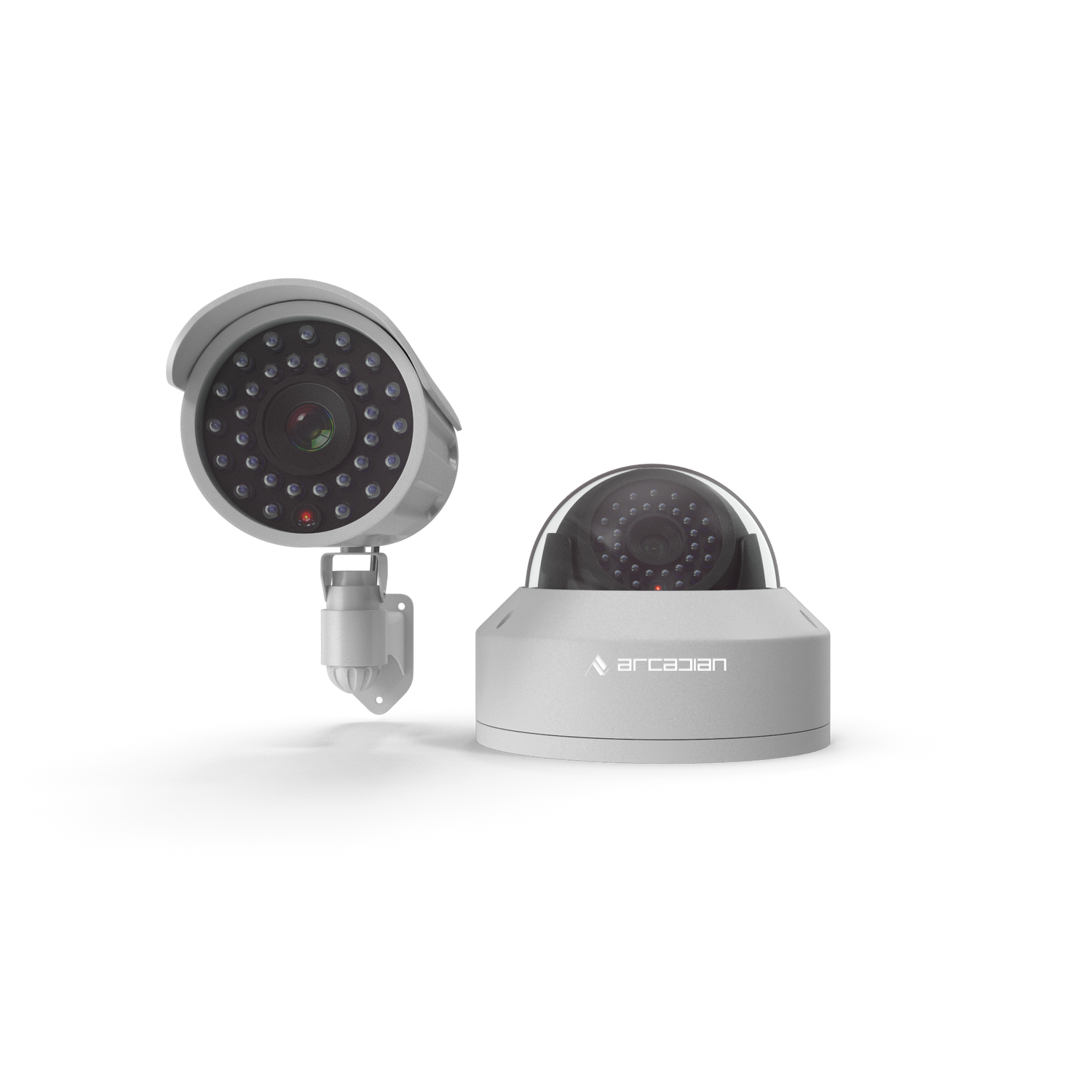Can You Train AI to Think Like a Loss Prevention Officer
Ever wish you could clone your best loss prevention officer? Imagine this: It's Black Friday. Your store's packed. Two staff are no-shows. Security is glued to the front doors. In Aisle 4, a shoplifter slips a $500 item under their jacket and walks right out. No one noticed. Not because...

- What Is Loss Prevention in Modern Retail?
- What Makes a Great Loss Prevention Officer?
- How AI Transforms Loss Prevention Services
- Retail Loss Prevention: Industry-Specific Applications
- Data Loss Prevention Solutions: Beyond Physical Security
- Training AI to Think Like a Loss Prevention Expert
- ROI of AI-Enhanced Loss Prevention
- Loss Prevention Manager: Integrating AI Tools
- Loss and Prevention: Comprehensive Strategies
- Implementation Guide for AI Loss Prevention
- The Future of Loss Prevention Technology
- Frequently Asked Questions (FAQs)
- Conclusion: The Future of Smart Loss Prevention
Ever wish you could clone your best loss prevention officer? Imagine this: It's Black Friday. Your store's packed. Two staff are no-shows. Security is glued to the front doors. In Aisle 4, a shoplifter slips a $500 item under their jacket and walks right out.
No one noticed. Not because they didn't care—because humans can't see everything.
But what is loss prevention in the age of AI? It's evolving from reactive monitoring to predictive intelligence. Modern loss prevention services now include AI-powered systems that can think, learn, and act like your best loss prevention officer—but without the human limitations.
This comprehensive guide explores how AI is revolutionizing retail loss prevention, what loss prevention professionals need to know about these technologies, and how businesses can implement data loss prevention solutions that actually work.
What Is Loss Prevention in Modern Retail?
What is loss prevention has evolved significantly beyond traditional security measures. Today's loss prevention encompasses:
Traditional Loss Prevention Methods
- Physical security personnel
- CCTV surveillance systems
- Electronic article surveillance (EAS)
- Access control systems
- Loss prevention manager oversight
Modern AI-Enhanced Loss Prevention
- Behavioral analytics and pattern recognition
- Real-time threat detection
- Predictive modeling for theft prevention
- Automated incident reporting
- Integration with existing loss prevention services
The Loss Prevention Council Board and industry leaders recognize that traditional methods alone are insufficient for today's sophisticated theft challenges. Modern loss prevention in retail stores requires intelligent systems that can think like experienced security professionals.
What Makes a Great Loss Prevention Officer?
Loss prevention isn't about watching endless camera feeds—it's about understanding human behavior and knowing what not to ignore. A skilled loss prevention officer possesses:
Core Loss Prevention Skills
- Behavioral Analysis: Distinguishing between loitering and browsing
- Pattern Recognition: Spotting subtle signs of intent before theft occurs
- Quick Response: Reacting fast without causing unnecessary scenes
- Memory Retention: Remembering faces, patterns, and incidents
- Documentation: Writing airtight reports for evidence and legal follow-up
Limitations of Human Loss Prevention
Even the best loss prevention professionals face constraints:
- Cannot monitor 30+ cameras simultaneously
- Cannot work 24/7/365
- Subject to fatigue, illness, and distractions
- Limited to single-location experience
- Potential for unconscious bias
This is where AI-powered loss prevention services bridge the gap, offering capabilities that complement and enhance human expertise.
How AI Transforms Loss Prevention Services
Understanding AI-Powered Loss Prevention
AI systems like ArcadianAI's Ranger represent the next generation of loss prevention solutions. Unlike traditional motion detectors, these systems analyze behavior and intent, not just movement.
Traditional Security System Alert:
"Motion detected in Zone 6."
AI-Enhanced Loss Prevention Alert:
"Individual exhibiting concealment behavior, repeatedly glancing around and adjusting waistband. Same person entered yesterday without purchase. Alert sent to loss prevention manager."
Key Advantages of AI Loss Prevention
- Behavioral Detection: Recognizes suspicious activities beyond simple motion
- Pattern Learning: Remembers and correlates incidents across time and locations
- Real-time Response: Provides instant alerts with actionable intelligence
- Bias-free Operation: Eliminates human prejudices in threat assessment
- Continuous Operation: Never sleeps, takes breaks, or calls in sick
Retail Loss Prevention: Industry-Specific Applications
Target Loss Prevention Integration
Major retailers like Target loss prevention teams are increasingly incorporating AI systems to:
- Monitor high-theft merchandise areas
- Detect organized retail crime patterns
- Reduce false alarms and improve response efficiency
- Enhance loss prevention manager decision-making capabilities
Walmart Loss Prevention Enhancement
Walmart loss prevention strategies now include:
- AI-powered self-checkout monitoring
- Predictive analytics for inventory shrinkage
- Advanced behavioral detection in high-traffic areas
- Integration with existing loss prevention services
Small Retail Loss Prevention Solutions
Loss prevention in retail stores of all sizes can benefit from AI through:
- Affordable cloud-based monitoring
- Integration with existing camera systems
- Scalable data loss prevention solutions
- Remote monitoring capabilities
Data Loss Prevention Solutions: Beyond Physical Security
What Is Data Loss Prevention in Retail?
What is data loss prevention extends beyond physical theft to include:
- Customer payment information protection
- Employee data security
- Inventory management system security
- Point-of-sale (POS) system protection
Comprehensive Data Loss Prevention Solutions
Modern data loss prevention solutions integrate:
- Network security monitoring
- Employee access controls
- Transaction anomaly detection
- Compliance reporting and documentation
Training AI to Think Like a Loss Prevention Expert
The Learning Process
Training AI for loss prevention involves multiple sophisticated approaches:
1. Behavioral Pattern Recognition
-
Object Tracking: Monitoring item handling and movement patterns
-
Pose Analysis: Detecting concealment behaviors and suspicious postures
-
Facial Recognition: Identifying repeat offenders and known threats
-
Crowd Dynamics: Understanding normal vs. abnormal shopping behaviors
2. Incident Correlation and Learning
Unlike a single loss prevention officer limited to one location, AI systems:
-
Learn from incidents across multiple stores
-
Detect repeat behaviors and patterns
-
Update threat models in real-time
-
Share intelligence across the entire network
3. Predictive Analytics
AI-powered loss prevention services can:
-
Predict high-risk time periods
-
Identify vulnerable merchandise areas
-
Anticipate staffing needs for optimal coverage
-
Forecast potential loss and prevention challenges
Real-World Training Examples
|
Human LP Skill |
AI Training Equivalent |
Practical Application |
|
Observational Awareness |
Deep learning object tracking |
Monitors 500+ cameras simultaneously |
|
Gut Feelings |
Predictive behavioral models |
Flags suspicious activity before theft occurs |
|
Pattern Recognition |
Statistical anomaly detection |
Identifies repeat offenders across locations |
|
Report Writing |
Automated incident documentation |
Generates detailed, timestamped reports |
|
Real-time Response |
Instant alert systems |
Notifies loss prevention manager in seconds |
ROI of AI-Enhanced Loss Prevention
Case Study: Multi-Location Retail Chain
A 6-location retail franchise struggling with inventory loss implemented AI-powered loss prevention services:
Challenge: $24,000 in unidentified shrinkage over 6 months AI Detection Results:
- Repeated cash drawer activity with no customer transactions
- Patterns of backroom access just before shift ends
- Inventory discrepancies correlated with specific employee schedules
Outcome: $24,000 recovered in 3 months, ongoing theft prevention
Cost-Benefit Analysis of AI Loss Prevention
|
Metric |
Traditional LP Officer |
AI-Enhanced Loss Prevention |
|
Coverage Hours |
8 hours/day |
24/7/365 |
|
Camera Monitoring |
8-12 cameras max |
500+ simultaneously |
|
Annual Cost |
$35,000-$50,000 |
$240-$7,200/year |
|
Response Time |
Minutes to hours |
Seconds |
|
Learning Capability |
Single location |
Network-wide intelligence |
Loss Prevention Manager: Integrating AI Tools
Enhanced Management Capabilities
AI doesn't replace the loss prevention manager—it empowers them with:
- Real-time Dashboards: Comprehensive loss prevention analytics
- Predictive Insights: Forecasting and trend analysis
- Resource Optimization: Smart scheduling and deployment
- Compliance Support: Automated reporting and documentation
Training and Implementation
Successful loss prevention manager integration requires:
- Understanding AI capabilities and limitations
- Developing AI-human collaboration protocols
- Creating escalation procedures for AI alerts
- Maintaining human oversight and decision-making authority
Loss and Prevention: Comprehensive Strategies
Holistic Loss Prevention Approach
Effective loss and prevention strategies combine:
- Physical Security: Traditional guards and barriers
- Technology Solutions: AI-powered monitoring systems
- Procedural Controls: Staff training and protocols
- Data Analytics: Loss pattern analysis and reporting
Industry Best Practices
Leading loss prevention programs incorporate:
- Regular Loss Prevention Council Board guideline reviews
- Continuous staff training and development
- Technology updates and system maintenance
- Performance metrics and ROI analysis
Multi-Channel Loss Prevention
Modern retail loss prevention addresses:
- In-store theft and shrinkage
- Online fraud and cybercrime
- Supply chain security
- Employee theft and insider threats
Implementation Guide for AI Loss Prevention
Phase 1: Assessment and Planning
- Evaluate current loss prevention services
- Identify high-risk areas and times
- Assess existing camera and security infrastructure
- Define success metrics and ROI goals
Phase 2: Technology Selection
- Research AI-powered loss prevention solutions
- Evaluate integration capabilities with existing systems
- Consider scalability and future expansion needs
- Review vendor credentials and references
Phase 3: Installation and Training
- Install and configure AI monitoring systems
- Train loss prevention manager and staff
- Develop response protocols and procedures
- Establish monitoring and maintenance schedules
Phase 4: Optimization and Scaling
- Analyze performance data and adjust settings
- Expand coverage to additional areas or locations
- Integrate with other data loss prevention solutions
- Continuously update and improve system capabilities
The Future of Loss Prevention Technology
Emerging Trends
The future of loss prevention includes:
- Advanced Behavioral Analytics: More sophisticated pattern recognition
- IoT Integration: Connected sensors and smart shelving
- Blockchain Security: Immutable transaction and incident records
- Predictive AI: Preventing theft before it's attempted
Industry Evolution
What is loss prevention will continue evolving through:
- Integration with smart retail technologies
- Enhanced data loss prevention solutions
- Improved human-AI collaboration
- More sophisticated threat detection capabilities
Frequently Asked Questions (FAQs)
What is loss prevention and how does AI enhance it?
Loss prevention refers to strategies and technologies used to minimize theft, fraud, and inventory shrinkage in retail environments. AI enhances loss prevention by providing 24/7 monitoring, behavioral analysis, pattern recognition, and real-time alerts that human officers cannot match in scope and consistency.
How do AI loss prevention services compare to traditional methods?
AI-powered loss prevention services offer several advantages over traditional methods: continuous 24/7 operation, simultaneous monitoring of hundreds of cameras, bias-free analysis, and learning capabilities that improve over time. However, they work best when combined with human loss prevention expertise rather than replacing it entirely.
What is data loss prevention and how does it relate to retail security?
What is data loss prevention in retail encompasses protecting both physical inventory and digital information. Data loss prevention solutions secure customer payment data, employee information, and business intelligence while AI-powered systems protect physical merchandise through advanced surveillance and analytics.
Can small retailers afford AI-enhanced loss prevention?
Yes, modern loss prevention services offer scalable solutions starting at $20-60 per camera per month. This makes AI-powered retail loss prevention accessible to businesses of all sizes, often providing better ROI than hiring additional loss prevention staff.
How does a loss prevention manager integrate AI tools?
A loss prevention manager can integrate AI tools by using them as force multipliers rather than replacements. AI provides real-time alerts, pattern analysis, and comprehensive monitoring while the loss prevention manager handles investigation, staff coordination, and strategic decision-making.
What role does the Loss Prevention Council Board play in AI adoption?
The Loss Prevention Council Board provides industry standards and best practices for implementing new technologies. They offer guidance on AI integration, privacy considerations, and effectiveness measurement for retail loss prevention programs.
How do major retailers like Target and Walmart use AI for loss prevention?
Target loss prevention and Walmart loss prevention teams use AI for behavioral analysis, organized retail crime detection, self-checkout monitoring, and predictive analytics. These systems help identify patterns that human observers might miss while reducing false alarms.
What is the difference between loss prevention and loss and prevention?
Loss prevention typically refers to stopping theft and shrinkage, while loss and prevention encompasses a broader strategy including risk management, safety protocols, and comprehensive loss mitigation across all business operations.
How effective is AI at detecting internal theft?
AI is highly effective at detecting internal theft because it can identify patterns like unusual register activity, suspicious timing of backroom access, and correlation between employee schedules and inventory discrepancies. Unlike human observers, AI monitors consistently without fatigue or bias.
What training is required for loss prevention officers working with AI?
Loss prevention staff need training on interpreting AI alerts, understanding system capabilities and limitations, developing response protocols, and maintaining human oversight. The goal is creating effective human-AI collaboration rather than replacing human judgment.
Can AI loss prevention systems integrate with existing security infrastructure?
Yes, modern AI loss prevention solutions are designed to work with over 3,000 different camera models and can integrate with existing POS systems, door sensors, and access controls. This allows retailers to enhance their current loss prevention services without complete system replacement.
What are the privacy considerations for AI-powered loss prevention?
AI loss prevention systems must comply with privacy regulations and should focus on behavior rather than individual identification. Reputable loss prevention services include privacy protections, data encryption, and compliance with local and federal privacy laws.
Conclusion: The Future of Smart Loss Prevention
The question isn't whether you can train AI to think like a loss prevention officer—it's whether you can afford not to. Modern retail loss prevention faces increasingly sophisticated threats that require equally sophisticated responses.
AI-powered loss prevention services don't replace human expertise; they amplify it. While a traditional loss prevention officer brings intuition, experience, and judgment, AI brings tireless vigilance, pattern recognition, and data-driven insights that human observers simply cannot match.
The most successful loss prevention programs of the future will combine:
-
Human Expertise: Strategic thinking and situational judgment
-
AI Capabilities: Continuous monitoring and pattern detection
-
Data Integration: Comprehensive data loss prevention solutions
-
Scalable Implementation: Growth-ready loss prevention services
Whether you're a loss prevention manager at a single store or overseeing retail loss prevention across multiple locations, the integration of AI technology represents the next evolution in protecting your business.
What is loss prevention in 2025? It's intelligent, predictive, and always watching—but still guided by human wisdom and experience. The retailers who embrace this combination will lead the industry in both security effectiveness and operational efficiency.
Ready to transform your loss prevention strategy? The technology exists today to make your security as smart as your best loss prevention officer—and available 24/7 365 days.

Security is like insurance—until you need it, you don’t think about it.
But when something goes wrong? Break-ins, theft, liability claims—suddenly, it’s all you think about.
ArcadianAI upgrades your security to the AI era—no new hardware, no sky-high costs, just smart protection that works.
→ Stop security incidents before they happen
→ Cut security costs without cutting corners
→ Run your business without the worry
Because the best security isn’t reactive—it’s proactive.







